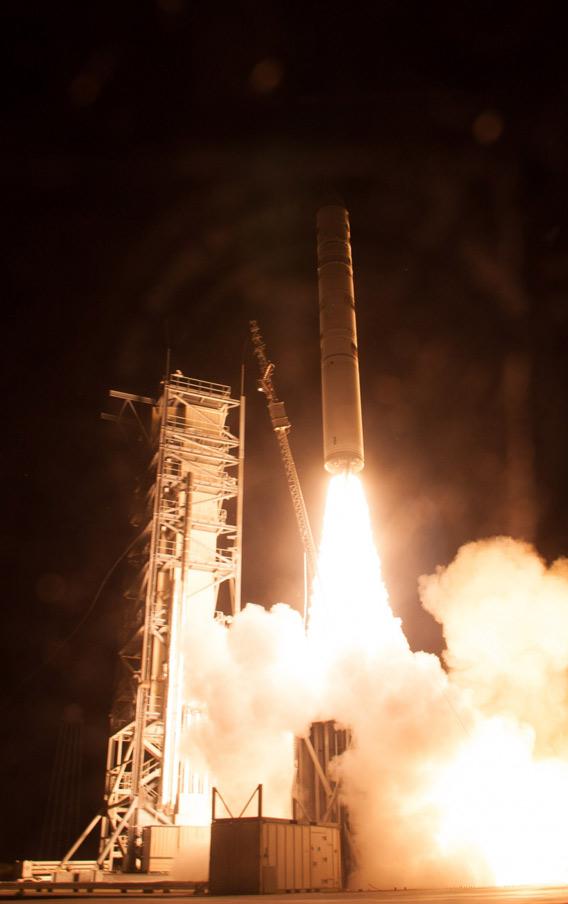At 11:27 p.m. local time Friday night, NASA successfully launched the Lunar Atmosphere and Dust Environment Explorer, or LADEE (LAD-dee, if you’re curious how to pronounce it)—a mission on its way to the Moon.
LADEE will investigate the environment near the lunar surface, including looking very carefully at the Moon’s atmosphere. I bet you didn’t know the Moon even had one! To be honest, it really depends on how much latitude you’re willing to give the word “atmosphere”. It’s only 0.001 percent as thick as Earth’s air, which is pretty dang close to a hard vacuum. But there is some material there, and it’s pretty interesting. It’s mostly composed of dust particles, molecules, and individual atoms blasted off the Moon’s surface by micrometeorites, solar wind, and high-energy light from the Sun.
We didn’t know it even existed until Apollo astronauts saw a mysterious glow in the sky while orbiting the Moon [UPDATE: In the comments to this post below, reader NGC 1275 notes the glow was detected before Apollo; for example, see here.] We now know this is due to the ethereally thin fog over the Moon’s surface. I think the most interesting aspect of this is that ultraviolet light from the Sun can ionize the dust on the Moon’s surface, stripping it of electrons. The electrically charged particles can then levitate over the surface due to electrostatic repulsion (the same thing that lets you rub a balloon on your hair and stick it to a wall). We’ve been able to learn a bit about this thin lunar atmosphere using observatories on Earth, but there’s nothing like actually being there.
LADEE will actually be there, hopefully increasing our understanding of this phenomenon. It will even be able to physically fly through the cloud of particles, collecting and sampling them. Given that we’re likely to encounter material such as this as we send probes (and people!) to airless bodies in the solar system, it’s worth learning more.
LADEE was launched on an Orbital Sciences Corporation Minotaur V rocket. The rocket has five stages; four to get the probe to the Moon, and a fifth to insert it into lunar orbit. It’s on its way now, looping around the Earth multiple times into higher and higher orbits, until next month when it can be placed into its science orbit around the Moon.
Here’s video of the launch itself:
This was a pretty interesting launch: It’s the first lunar mission for Orbital, as well as the first lunar probe launched from the Wallops facility in Virginia. People all up and down the East Coast were able to see it, too. This view from New York City is probably my favorite, taken from Rockefeller Center with the Empire State Building the foreground. Flickr is loaded with images worth poking through.
I’ll note there was a brief hiccup when LADEE’s reaction wheels—used to point and stabilize the spacecraft—were turned on and found to be rotating too quickly, which automatically sent them in “safe mode”, shutting them down. The problem was quickly fixed, though, and everything now looks good.
Congratulations to Orbital and to NASA on this new mission to the Moon!
Correction (Sep. 8, 2013): In the original text, I wrote that the photo shows Rockefeller Center in the foreground, when it was taken from RC.
